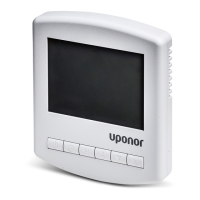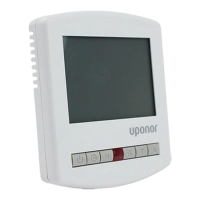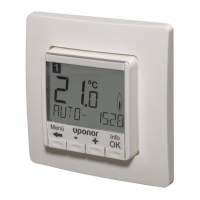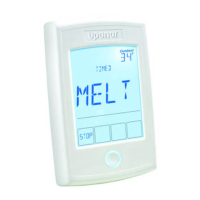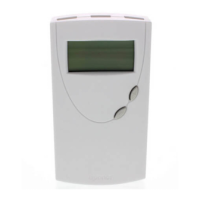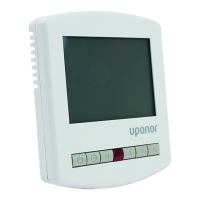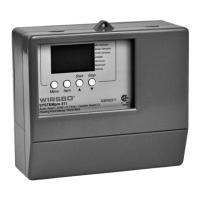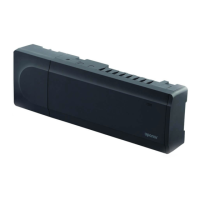Climate Control Zoning System II installation and operation manual | Chapter 9 – Troubleshooting l 33
Dial thermostats
An alarm is sent when more than one hour has elapsed since the controller received the last radio signal from the thermostat.
The table below lists problems that can occur with dial thermostats.
Indication Probable cause Solutions
The LED on the thermostat flashes twice. The thermostat battery power is running low. Replace the batteries.
Base unit alarms
An alarm is sent when more than one hour has elapsed since the base unit received the last radio signal from the thermostat.
The table below lists problems that can occur in the base unit.
Indication Probable cause Solutions
The power LED and channel LED on the
controller flashes.
The antenna is out of position or a wire is
disconnected
Install the antenna in a correct position with the cable
correctly connected.
Alarm in the interface
The battery icon is displayed in room
information on the interface or thermostat.
The batteries in the thermostat are
discharged.
Replace the batteries.
When the error is resolved, the thermostat screen
displays the room temperature and the battery icon
disappears.
Radio alarm in interface
The radio icon is displayed in room
information on the thermostat.
The power LED and thermostat LEDs in the
controller for the connected channels flash.
The thermostat is out of radio range. Reduce the distance between the thermostat and
controller or change location of the thermostat in
the room.
Contact the installer
For installer contact information, refer to the installation report
at the end of this document. Prepare the following information
before contacting an installer:
• Installation report
• Drawings of the underoor heating system (if available)
• List of all alarms, including time and date
Installer instructions
To determine if a problem is caused by the supply system or
the control system, loosen the actuators from the manifold for
the room concerned, wait a few minutes and check if the ow
pipe of the underoor heating loop becomes warm.
If the pipe does not become warm, the problem is in the
heating system. If the loop becomes warm, the cause could
be the room control system.
A supply system defect can be indicated by no warm water
in the manifold. Check the boiler and circulation pump.
Table 9-4: Troubleshooting dial thermostats
Table 9-5: Base unit alarms
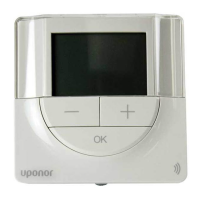
